Explore By
 Exams
Exams
 Countries
Countries
 Expenses
Expenses
 Universities
Universities
The United States is the most preferred and desired destination among international students, well-known for its ground-breaking research, innovation, and entrepreneurship opportunities. Studying in the U.S.A would be one of the major milestones in a student’s career that can improve their life.
Approximately half of the best global universities are situated in the United States. From undergraduate programs to Ph.D.-level programs, universities in the US offer top-ranked academic opportunities across all disciplines. The nation houses all 8 Ivy League universities of the world, of which Harvard University holds the highest rank in the nation and is considered \ one of the most prestigious universities in the world.
Most universities in the U.S pride themselves on being a leader, and at the forefront of engineering and technology. Students can explore various engineering fields, from studying the latest advancements in 3D printing to exploring aerodynamic design. According to the U.S News Rankings, the universities that sit at the top of the pyramid for engineering programs are the Massachusetts Institute of Technology (MIT), Stanford University, and the University of California.
At the height of academia are the research universities. These universities put a lot of emphasis on research from both students and the faculty. These universities receive the best resources, faculties, and funding in millions of dollars to perform research. Some elite universities receive the highest research and development funding, which can go up to a billion dollars or more. These universities include Johns Hopkins University (2.9B/year on R&D), the University of Michigan (1.6B/year on R&D), the University of California (1.5B/year on R&D), and the University of Pennsylvania (1.3B/year on R&D).
The U.S.A is often known as the land of free, where students have ample opportunities and can achieve anything. Studying in the U.S.A will not only broaden students’ educational outlook but also their cultural experience. Most universities are incredibly diverse and have multicultural societies. Diversity is not only limited to race and ethnicity; it includes students of different religions, economic statuses, sexual orientations, gender identities, and language backgrounds.
The admission process differs from college to college, but the following documents remain/general requirements remain staple for admission to higher education in the United States.
Proof of English proficiency (TOEFL/IELTS)
GMAT/GRE for postgraduate programs
Letters of recommendation
Statement of purpose
Academic transcripts
Copy of a valid passport
The United States of America is home to some elite universities in the world; it also houses the venerable Ivy League. Today, around 4000 universities and colleges across the nation welcome students from all over the world to study in the U.S.A. According to QS World University Rankings, 50 universities in the top 200 universities in the world are situated in the U.S.
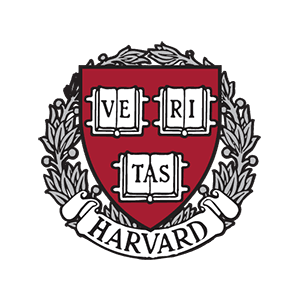
Harvard University
Cambridge, Massachusetts
Know More
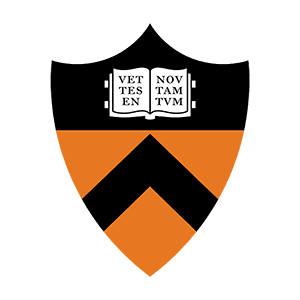
Princeton University
Princeton, New Jersey
Know More
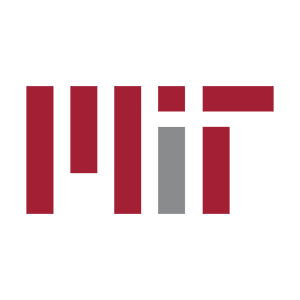
Massachusetts Institute of Technology
Cambridge, Massachusetts
Know More
The unparalleled diversity in the U.S is not only limited to culture and traditions, but it can also be seen when it comes to profession. As one of the hotspots of higher education, it offers a broad spectrum of programs for international students to study in the US. Be it any profession, right from a STEM program such as Aeronautical Engineering to an art program like Film, there will be a university in the U.S that will provide ace education along with a student experience, unlike any other country.
According to Times Higher Education, the United States is the most expensive study abroad destination for higher education. Starting your study abroad journey with early financial planning and research will make your higher education affordable and give you high returns on your investment.
Level of Education | Tuition fees (in USD) |
Undergraduate Degree | $20,000 to $40,000 / year |
Graduate Degree | $20,000 to $45,000 / year |
Doctoral Degree | $28,000 to $55,000 / year |
Living Expenses
Tuition fees are students’ prime expenditure, but one should not overlook other expenditures that come with studying abroad- for example, accommodation costs, books and supplies, food, travel, and more. Students should keep a little money aside for grocery shopping, social activities, and emergencies.
Expenses | Average cost |
Books and Stationery | $500 - $1000 |
Traveling | $500 - $1200 |
Food | $2500 |
Clothes and Footwear | $500 |
Miscellaneous Expenses | $2000 |
Recent Blogs
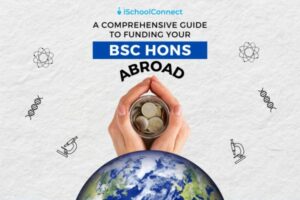
Updated on Nov 02 ,2023
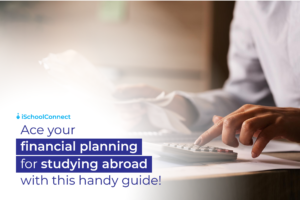
Updated on Aug 14 ,2023

Updated on Apr 07 ,2023
“Higher education can’t be a luxury” - Barack Obama. To make education affordable, the US Government, universities and private organizations offer various scholarships and grants for international students.
Government-funded scholarships in the USA for international students
Fulbright Foreign Students Program
Hubert Humphery Fellowship Program
Non-governmental US scholarship in the USA for international students
#YouAreWelcomeHere Scholarship
Civil Society Leadership Award
David P. Shapiro Autism Scholarship
Surfshark Privacy and Security Scholarship
For Asian Students
East-West Center Scholarships and Fellowships
Japan-United States Friendship Commission
Wesleyan Freeman Asian Scholarship Program
For Australian Students
Fulbright Program
Recent Blogs

Updated on Jan 22 ,2024
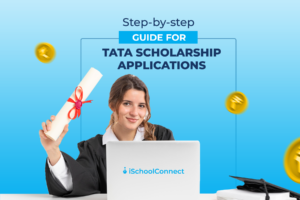
Updated on Dec 25 ,2023
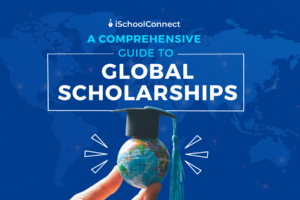
Updated on Nov 21 ,2023
The most stressful part of moving abroad for higher education can be accommodation. The golden rule to studying in the USA is to start searching as soon as possible to get the right combination of location and price. On a global scale, the average cost of living with all the miscellaneous expenses (food, transportation, etc.) in the United States is considerably higher than in other destinations.
On-campus Accommodation
On-campus accommodation is one of the most accessible and affordable student arrangements. On-campus housing will reduce students’ rent, and transportation costs, while enjoying campus life without worrying about safety and security. Students will also have access to all the basic amenities such as water, food, electricity, and internet.
Average Public College cost - 9,800 USD/academic year
Average Private College cost - 11,100 USD/academic year
Off-campus Accommodation
Although off-campus accommodation in the US. is generally unavailable for first-year students, sophomores and onwards can start exploring various off-campus accommodations.
Residence Halls: Building featuring flats where students can stay in single rooms or need to share with other students.
Canteens
Health Centres
Recreational Activities
$800 - $900
Shared Apartments: Type of accommodation not connected to the university. Students need to sign tenancy contracts - legal documents putting down the terms of students’ stay.
Preferred by students who love a private lifestyle.
Give a sense of independence where one has to look over all the aspects of living such as cleaning, cooking, groceries, and more.
$400 - $600 (shared by 4)
Homestay: Considered one of the safest types of accommodation, where students will be leaving with U.S. families right in their home.
Students will have easy access to all the basic amenities such as food and furniture.
Students will have peace of mind and protection in a foreign land.
$300 - $500
Luxury Accommodation: The most comfortable choice of living. Apartments are generally fully furnished and come loaded with designer fittings and fixtures.
All the basic amenities are covered.
24/7 secured apartments.
Gymnasiums, cinema rooms, and more luxury amenities.
$2000
The U.S. government offers three types of visas to study in the U.S.A
Type | Description |
F-1 Student | To study at an accredited US college or university or to study English at an English language institute. |
J Exchange Visa | For participation in an exchange program, including high school and university study. |
M Student Visa | Non-academic or vocational study or training in the US. |
Procedure
As a primary step for studying in the USA., a student must be accepted by an American university certified by the Student and Exchange Visitor Program (SEVP). Once students are accepted, they will receive a Form I-20 from the institution's international student office, which is a paper record of their information in the database called the Student and Exchange Visitor Information System (SEVIS).
Documents
Paperwork and documentation are an important part of studying in the U.S.A for higher education. To ensure a hassle-free admission process, students must keep the following documents ready with them at all times.
A valid passport that is valid for at least six months beyond the student's period of stay in the U.S.
Acceptance at a SEVP-approved school and your Form I-20.
Application fee payment for the SEVIS.
Non-immigrant visa application and the Form DS-160 confirmation page.
Students photograph in the requested format and number.
Note: As an international applicant, students will have to pay $160 as an application visa fee.
Interview
A successful US visa interview requires preparation, just as any interview and application process. The interview is designed to showcase why one would be traveling and establish their status as a legitimate student to study in U.S.A.
The interview questions would be based on five criteria:
Study Plans
Choice of University
Academic Capability
Financial Condition
Post-graduation Plans
Studying in the U.S.A is one thing but one should seek the golden opportunity of working in the U.S.A and gaining international exposure. Most international students in the United States hold an F-1 visa, which is a U.S. non-immigrant student visa.
Part-time Work Opportunity
Juggling finances between tuition fees, rent, books, and supplies is a daunting task. A part-time job can help manage r all your financial worries. With a US student visa you can work up to 20 hours per week during school. You can work full-time during school break periods (up to 40 hours per week).
Full-time Work Opportunity / Post-Study Work Opportunity
Currently, the U.S. immigration laws allow international students to be employed in the country during and after the course completion, however there are restrictions. Practical training offers students who have studied in the U.S. on an F-1 visa the opportunity to work for up to twelve months in a field related to their studies. The US organizations think of international staff as the keystone of its ability to succeed in international markets.
Internships
Internships are considered Optional Practical Training (OPT). OPT is a period during which students with F-1 status who have completed their studies are permitted by the United States Citizenship and Immigration Services to work for twelve months per educational level.
Work on H-1B Visa
If students hope to remain in the U.S.A for longer than the period of their Practical Training, it is important to acquire an extended visa - an H-1B visa. The H-1B is a temporary visa category that allows employers to petition for highly educated professionals to work in “specialty occupations” that require at least a bachelor’s degree or the equivalent.
Work on EB5 Visa
The EB5 visa allows students to live, pursue education, work or retire in the U.S. without having to find an employer. To receive this visa, one must invest at least $900,000 in a US enterprise and create at least 10 American jobs. The US only issues 10,000 EB-5 Investment Visas per year.
Recent Blogs
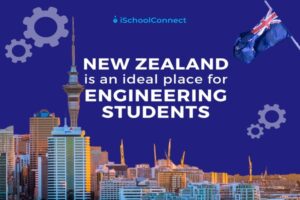
Updated on Apr 25 ,2024
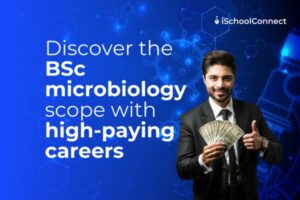
Updated on Nov 06 ,2023

Updated on Sep 12 ,2023
The United States of America is a prime destination for students worldwide to pursue the finest quality of higher education. However, it is crucial to know that applying for university does not mean only filling up paperwork and submitting those. As the U.S sits at the top of the charts for being the most expensive destination for students, it is important to plan your finances accordingly.
Study in the U.S.A for free/lower cost
Full-ride Scholarship: Students should try to apply for full-ride scholarship programs. A full-ride scholarship covers the university’s entire cost of attendance, from tuition fees to room and board costs. The thing to note here is that full-ride scholarships are super rare. Every year, around 20,000 students win full-ride scholarships - less than 1% of each academic year’s incoming college freshmen.
Tuition-free Universities: Some U.S. schools do not charge tuition fees. The list includes universities like Alice Lloyd College, The Apprentice School, Barclay College, The University of New Hampshire, etc.
Scholarships: There are many universities in the U.S.A which are not entirely free of cost, but offer generous scholarships to international students. The list includes universities like Harvard University, Yale University, Princeton University, The University of Pennsylvania, Duke University, and more.
“Why study in the U.S.A?” is one of the questions that does not require an in-depth explanation. Every academic year more than 1 million students from across the world come to the U.S. to pursue quality education. Here is why-
Academic Excellence: 50% of universities in the top 10 ranking universities are from the U.S.
Diversity in Programs: The U.S.A offers unparalleled academic flexibility to international students. Students can select their program from a broad spectrum of available courses, right from aeronautical engineering to music.
Support for International Students: Most universities offer excellent support for international students. The support is not only restricted to academics but students can also expect financial support in the form of grants, loans, and scholarships.
Rich Cultural Diversity: With students hailing from all over the world, the U.S.A has become a melting pot of students from different cultural backgrounds. Students can immerse themselves and be a part of a regional culture rich in history and local traditions.
Students cannot study in the U.S.A with a B1/B2 visa for programs that exceed 3-6 months. They can undertake recreational study (non-credit) on a B visa.
The three different types of visas for students to study in the US
F1 Student Visa: Applicable for students who are planning to undertake undergraduate and graduate studies. Anyone accompanying F-1 visa recipients will travel on an F-2 visa.
J1 Student Visa: Also known as Exchange Visitor Visa, is for students who wish to undertake study and work-related exchange programs approved by the Department of State Bureau of Educational and Cultural Affairs.
M1 Students Visa: The M1 visa is for students who want to enroll in vocational studies in the United States. Vocational studies programs include cooking classes, technical courses, mechanical classes, flight school, cosmetology, and more.

Updated on Apr 25 ,2024

Updated on Mar 06 ,2024

Updated on Feb 16 ,2024
TOEFL
English language proficiency test
PTE
The computer-based English test
SAT
Standardized test administered by College Board
GRE
Admission test for graduates
GMAT
Test for Business and Management Programs
Confused which university to choose?
Use our recommendation engine to analyze your profile and recommend the most desirable programs that fit you.
Get Recommendations